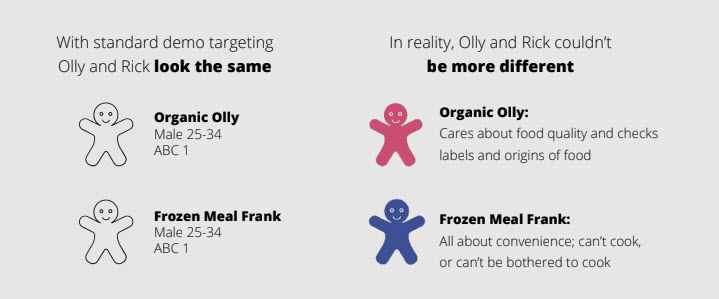In 2021… CTV, Mobile and Improved Targeting Capabilities Will Change The Way Brands Reach Consumers
There’s no doubt that 2020 has been a challenging year — not just for Adland, but for the whole world.
So, as we prepare to wave goodbye to a year to forget for many of us, it’s time to look forward to what the next 12 months may have in store.
To help us stare into our crystal balls at the not-too-distant future, we’ve spoken to Unrulies from across the globe to see what they believe 2021 may hold for their markets. Trying to predict the future after one of the most unpredictable years in history is not easy, but our team was up for the challenge.
In fact, we were given so many predictions, we had to spread them out across three different blog posts, each exploring a different theme.
In the final edition of our series of prediction blog posts, our APAC experts share their views on how privacy policies will change the advertising landscape, looking beyond desktop screens, and how emotion, culture, and context will still be very relevant in the coming year.
Let’s just hope 2021 will be slightly more predictable than 2020 (but we’re not holding our breath).
Vertical Video, the new normal
Catherine Le Liboux, SVP Growth, APAC

Vertical video formats are nothing new, but they are often overlooked.
Video consumption through mobile devices rises every year and we’ll continue to see a rapid increase in 2021. The reason for this is simple –supply and demand.
Prior to the COVID-19 pandemic, mobile internet user penetration was at 48% in 2019 and was predicted to reach 61% by 2025. And we can only expect this to rise due to the change in consumer behaviour post-outbreak. We carried out a global study which found that 62% of consumers in Singapore started spending more time on their mobile devices during the pandemic. We also saw a similar pattern across all other markets, proving an increase in mobile usage across the world.
Another study found that 82% of users find it off-putting to watch videos that are not optimised for their chosen orientation, showing that there is clearly a huge demand for a better mobile viewing experience. In a world dominated by horizontal video, vertical video will be an integral part of growing demand for an enhanced mobile experience.
With the increase of mobile usage, naturally comes the evolution of social media – from networking with friends to new brand discovery, product research, brand interactions, drive purchases. Social media platforms, that have already embraced vertical video, would have to continue adapting to the everchanging needs of users, and this may bring about exciting new mobile app features.
Vertical Video is the future of brand storytelling and video advertisers need to be prepared, incorporating it into their marketing mix sooner than later as it might soon be the norm.
Something that might happen a little further down the road, the world’s first blockbuster movie shot entirely in Vertical format!
Away with demographic approximations
Ayana Sato, Insights Manager, APAC

Brands produced and targeted ads based on demographics, this used to be standard procedure but has long been outdated. A whopping 71% of consumers feel that the messages and ads they receive are not representative of themselves. (MERKLE) In an age where consumers crave personalisation, content production and ad targeting based on demographic approximations alone will not cut it anymore.
Contextual, emotional, and cultural relevance now play an integral role in serving consumers personalised ads and we can expect to see brands becoming more serious about both targeting and testing their ads beyond demographics in the coming year.
AUNZ’s confidence in the coming year
Heath Irving, Head of Programmatic AUNZ

Publisher first-party data will become increasingly powerful
As privacy regulation increases and third-party cookies become less effective buyers will be looking to the big publishers for targeting options that scale. This means more direct buys via PMP/PG deals where the data is overlayed on the publisher side rather than the buyers. This gives the buyer confidence in reaching their consumers at scale. The ones that have an advantage will be how well they can take onboard client’s own data across their platforms.
Rise of the OEM’s
Expect to see the original equipment manufacturers like LG Electronics and Samsung start to dip their feet into the waters of the hot new kid on the block: CTV. The likes of Samsung and LG have really bolstered up their advertising opportunities in 2020 and look to be releasing more opportunities that are inherent to their devices. The fight of the SSPs to represent this exciting part of the CTV sector is on and those already with integrations laid down are in a very good spot to take full advantage.
Bounce back from the pandemic
Australia and New Zealand have fared well in comparison to Europe and the US in terms of COVID and its impact on the market. If current trends continue, brand confidence will only be on the rise and there is no reason why the market won’t follow. Time will tell if the end of warmer months signals an increase in cases again but going off performance from the end of year quarter is anything to go off, it looks like smooth sailing ahead.
Adland Japan 2021
Wataru Nakano, Country Manager, Japan

Japan may be forced to turn to contextual targeting
Contextual targeting and the quality of media content will be more valuable for digital advertising targeting in the coming year.
The Japanese Personal Information Protection Law was amended in 2020 and will be enforced in the coming years. As a result, audience targeting with 3rd party data may be put on hold until further notice, resulting in the industry needing to seek alternative viable solutions. This could be the chance for contextual targeting and media quality selection to finally have its day.
CTV will become even more important for both Japanese consumers and brands
During 2020 34% of Japanese consumers spent more time watching video streaming media than terrestrial digital broadcasting (The Trade Desk).
As with many other markets, CTV is a hot topic in Japan and with the emergence of more channels and exclusive content, this area will continue to grow throughout 2021 for both audiences and advertising spend.
CTV growth is also expected to continue in Japan over the next five years going from $98M in 2020 up to $537M in 2024(SMN and Digital InFact).
The battle between paid streaming and free ad-funded services will also continue to heat up. Our latest research shows that 85% of Japanese consumers prefer advertising video on demand (AVOD) compared to paid video services (Unruly).
Hungry for more 2021 predictions? Follow the links below!
In 2021… The Advertising Industry Will Continue To See Unprecedented Change
In 2021… Video Will Continue to Grow, Dominate and Transform the Advertising Industry
